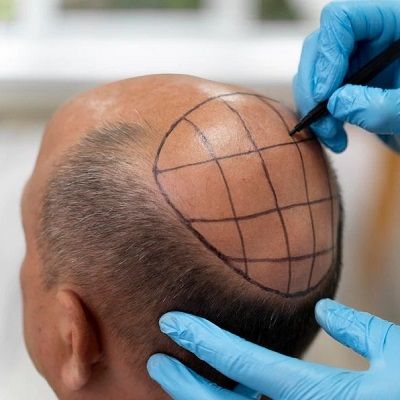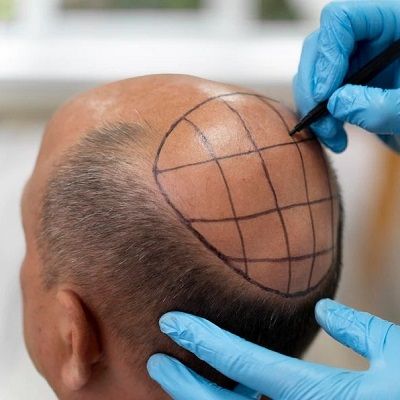Introduction
Hair loss can result from various factors, including genetics, hormonal changes, stress, and medical conditions. For many, the thought of undergoing a hair transplant may be daunting due to the invasiveness, cost, and recovery time involved. Fortunately, advancements in dermatology and cosmetic science in Hair Transplant in Oman have led to the development of non-surgical treatments that offer promising results for hair restoration. This article explores these non-surgical options, providing insights into their efficacy, process, and suitability for different hair loss conditions.

Process
1. Platelet-Rich Plasma (PRP) Therapy
Process: PRP therapy involves drawing a small amount of blood from the patient, which is then processed in a centrifuge to separate the platelet-rich plasma from other blood components. The PRP is then injected into the scalp at areas of hair thinning or loss. This procedure stimulates hair follicles by promoting natural hair growth through increased blood supply and cell regeneration.
2. Low-Level Laser Therapy (LLLT)
Process: LLLT uses low-level lasers or light-emitting diodes (LEDs) to irradiate the scalp. The light energy is absorbed by the hair follicles, which can enhance cellular metabolism and promote hair growth. Treatments are typically administered through a laser device or helmet worn on the head.
3. Topical Treatments
Process: Topical treatments, such as minoxidil, are applied directly to the scalp. These products work by stimulating hair follicles and prolonging the growth phase of hair. Consistent application is required to see results, and effectiveness varies among individuals.
4. Oral Medications
Process: Oral medications like finasteride work by inhibiting the hormone dihydrotestosterone (DHT), which is linked to hair loss in androgenetic alopecia. By reducing DHT levels, these medications can slow down hair loss and, in some cases, stimulate new hair growth.
5. Hair Growth Shampoos and Serums
Process: Specialized shampoos and serums contain ingredients designed to promote hair growth and strengthen existing hair. These products often include vitamins, minerals, and botanical extracts that support follicle health and reduce hair thinning.
Benefits
1. Platelet-Rich Plasma (PRP) Therapy
- Natural Treatment: Utilizes the patient’s own blood, reducing the risk of adverse reactions.
- Minimally Invasive: Involves no surgical incisions or stitches.
- Minimal Downtime: Most patients resume normal activities shortly after treatment.
- Promotes Natural Growth: Stimulates the body’s own healing processes for hair regrowth.
2. Low-Level Laser Therapy (LLLT)
- Non-Invasive: Does not require any needles or surgery.
- Safe and Painless: Generally well-tolerated with minimal side effects.
- Convenient: Can be administered in a clinical setting or using at-home devices.
3. Topical Treatments
- Accessible: Available over-the-counter or by prescription.
- Ease of Use: Simple to apply directly to the scalp.
- Proven Efficacy: Minoxidil has been clinically proven to be effective for many users.
4. Oral Medications
- Effective for Many: Finasteride is effective for a significant number of men with androgenetic alopecia.
- Convenient Administration: Taken as a daily oral pill.
5. Hair Growth Shampoos and Serums
- Daily Routine Integration: Easily incorporated into regular hair care routines.
- Varied Formulations: Wide range of products catering to different hair types and needs.
- Supplementary Benefits: Often include conditioning and strengthening properties.
Characteristics
1. Platelet-Rich Plasma (PRP) Therapy
- Customized: Treatment is tailored based on individual hair loss patterns.
- Regenerative: Leverages the body’s natural healing processes.
2. Low-Level Laser Therapy (LLLT)
- Technology-Based: Utilizes advanced light technology for treatment.
- Regular Sessions Required: Effectiveness may require ongoing treatments.
3. Topical Treatments
- Varied Formulas: Available in various concentrations and formulations.
- Consistency Needed: Results depend on regular and prolonged use.
4. Oral Medications
- Prescription-Based: Often requires a prescription and medical oversight.
- Systemic Effects: May have systemic effects beyond the scalp.
5. Hair Growth Shampoos and Serums
- Over-the-Counter Availability: Can be easily purchased without a prescription.
- Supportive: Generally used in conjunction with other treatments for best results.
Conclusion
Non-surgical hair restoration options offer a range of benefits for those seeking to manage hair loss without the need for invasive procedures. Platelet-rich plasma therapy, low-level laser therapy, topical treatments, oral medications, and specialized hair growth shampoos and serums each present unique advantages and characteristics suited to different hair loss conditions and individual preferences. While these non-surgical methods may not offer the same dramatic results as surgical interventions, they provide valuable alternatives for those looking to improve their hair health and appearance with less risk and recovery time. Consulting with a healthcare professional can help determine the most suitable treatment based on individual needs and goals, leading to effective and personalized hair restoration strategies.
